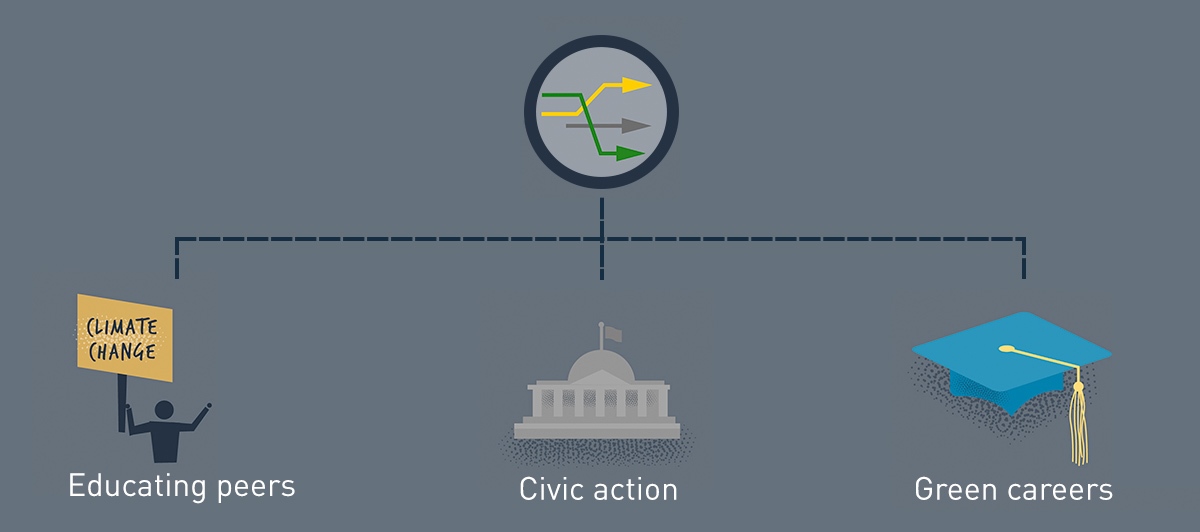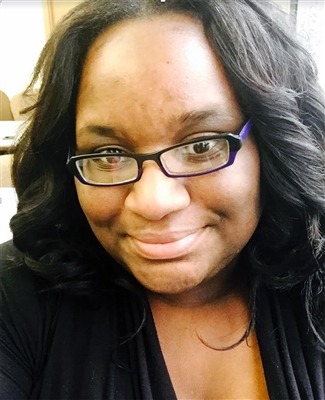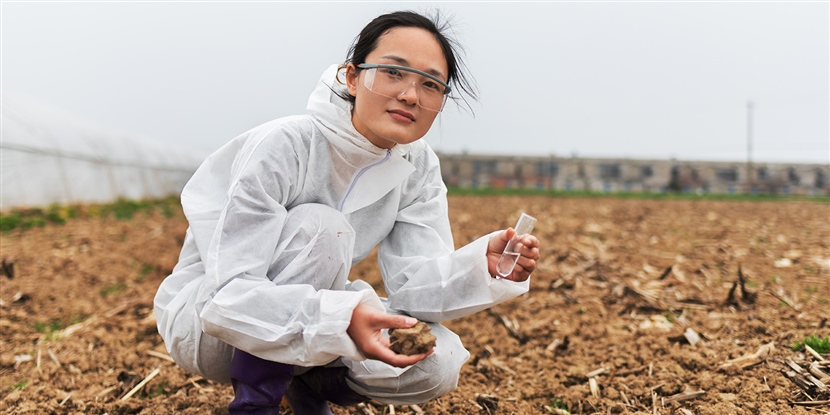By Molly Sinnott and Judith Jeremie, OER Project Team
Anyone who tracks their step count as fanatically as we do knows that teaching is not a profession for the idle. While not everyone may be as committed as we are to high-cushion soles, no one can deny that teachers are doing pretty much all day, every day. In fact, one of the primary reasons many of us are drawn to teaching in the first place is a drive to make a real impact in a field we care deeply about.
And yet it can be surprisingly hard to come up with an answer to a question that we face regularly from our students, and likely, from ourselves, when confronting really big problems: “What can I actually do about this?” When it comes to complex issues like climate change, it can feel impossible for any one person to believe they have the power to actually do anything about it. Moreover, what can our teenage students do to make any sort of meaningful impact?
The OER Project’s Climate Project extension course encourages students to examine both their individual interests and the values of their school and community to develop answers to that question. What are the things they’re already good at? Where are they curious and inspired to learn more? What needs have they noticed in their community? Answering these questions first can help students discover action that is locally relevant and individually engaging.

The course lays out three pathways for realistic and meaningful student action: educating their peers or communities, implementing civic action, and preparing for a green career. (In their recent blog post, Trevor Getz and Mike Zis break down the ways the Inflation Reduction Act, the recent climate action bill, directly impacts students in these areas.)
 One of us—Judith—piloted the Climate Project extension course in her AP world history classroom last spring, and she found student efforts to educate their families, peers, and community to be particularly valuable. In Judith’s view, “awareness is one of the most important things we as teachers can help students achieve because students can then take that awareness and spread it to people who may not know about the other options that exist. One day we were talking in class about how the city of Las Vegas recycles water for the big fountains. Most students didn’t know that, and now when they travel they’re tuned into the way different places are dealing with the climate crisis. Other students were more interested in K-pop stars or celebrities and amplifying what they’re doing for the climate.”
One of us—Judith—piloted the Climate Project extension course in her AP world history classroom last spring, and she found student efforts to educate their families, peers, and community to be particularly valuable. In Judith’s view, “awareness is one of the most important things we as teachers can help students achieve because students can then take that awareness and spread it to people who may not know about the other options that exist. One day we were talking in class about how the city of Las Vegas recycles water for the big fountains. Most students didn’t know that, and now when they travel they’re tuned into the way different places are dealing with the climate crisis. Other students were more interested in K-pop stars or celebrities and amplifying what they’re doing for the climate.”
From there, increased awareness can often lead to civic action opportunities. Judith says, “My students realized that awareness extends beyond individual actions to corporate and government responsibility, which is the perfect place to then ask, ‘What can you do about it?’” In her classroom, she supported letter-writing campaigns to elected officials, an activity that aligns directly with social studies standards, in particular taking informed action. “While it’s so important for adults to provide for young people the opportunities to take action, I’m being realistic here and I know that most teachers don’t have a ton of time to support super elaborate projects. It’s important to think about projects that fit with the existing classroom environment.”
 Climate-related careers: physicists and engineers, policy-makers, construction workers, urban planners, and educators. Photos © Getty Images.
Climate-related careers: physicists and engineers, policy-makers, construction workers, urban planners, and educators. Photos © Getty Images.
The Climate Project also provides students with the tools to help them think about the steps they can take now to prepare for a future climate-related career. Pursuing a career path offers an opportunity to align student interest with community impact that extends well beyond the confines of this course. To solve the global carbon problem, we need physicists and engineers, but we also need policy-makers, construction workers, urban planners, and educators. “My school is a tech school, so the career focus is perfect for my students,” says Judith. “So many of the careers discussed in the course are applicable to what my students are already pursuing and got them thinking about jobs that align with their interests. Giving students the opportunity to see how they could join companies or industries and make a difference is a great next step to research.”
Our students are asking for the information and tools to take action. To learn more about how you can facilitate student action in your social studies classroom and talk to other Climate Project teachers like Judith, check out the Climate Project and the OER Project Online Teacher Community.
About the authors:
Molly Sinnott is a member of the Climate Project editorial team. She was previously a classroom reading and writing teacher, specializing in supporting students in executive-function skills development. She focuses on building approachable and inclusive content for a diverse range of students.
Judith Jeremie received her doctorate in education at St. John's University and is a teacher at Brooklyn Technical High School. She has taught at the high-school level for over 12 years, specializing in AP® world history and US history courses. In addition, she is a social studies curriculum writer for the New York City Department of Education.
Cover image: Young female scientist holding test tube and soil. © Qi Yang / Moment / Getty Images.
 For full access to all OER Project resources AND our amazing teacher community,
For full access to all OER Project resources AND our amazing teacher community, 
